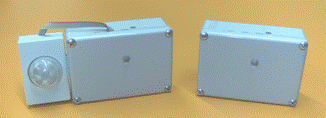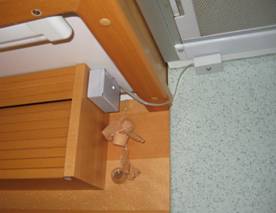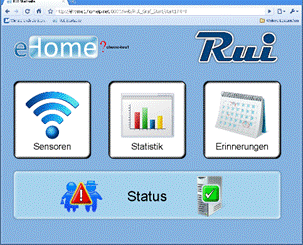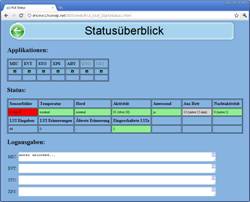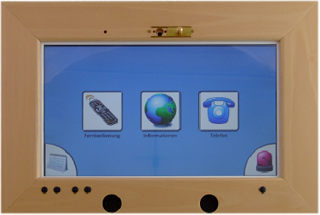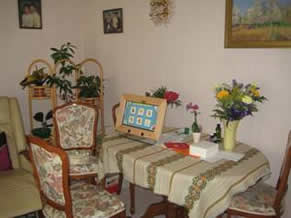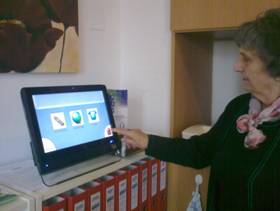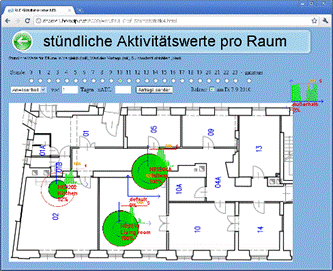
|
|
|||||||||
eHome Project ResultsThe developments in the e-Home Project have been finished successfully. An extensive field study verified the usefulness of the chosen approach.
Structure of the e-Home system SensorsWithin the e-Home project both, commercial sensors and a newly developed ZigBee-based "SensorBox" have been utilized. The own development targeted the integration of all the sensor and actuator logic into a small housing with power supply from battery or mains. Special emphasis was put on the very sensitive capture of vibration for the falls detection, a feature currently not available in commercial sensors. SensorBox with and without PIR movement sensor The SensorBox houses a vibration, a temperature and light sensor and inputs for a PIR movement sensor and door or window switches.
SensorBox above stove in kitchen Additionally, sensors with ENOCEAN and FS20 RF protocol and ZigBee switchable power plugs with energy monitor from Plugwise, as well as external weather data have been integrated into the e-Home network. Central Unit (HCU)An embedded Linux system was used as central unit. It collected and aggregated the sensor data in a database and combined the cleaned-up events by an adaptive rule engine for detecting of behavioral patterns. Web-based result pages, the so called RUI (remote user interface), are used to present the overall system status and the user activities in an easy to understand manner. The web pages can also be used to configure the system and to access statistical figures for the activities in the different rooms. All the collected data can be retrieved in graphical or textual form. Some RUI pages If configured limits are exceeded, alarms can optionally be sent to configurable external recipients or the user can be prompted. Manual or automatic emergency calls are supported over a video telephony link in the local user interface (LUI). Local User Terminal (LUI)A user friendly interface on a touchscreen PC provides intuitive hands-free telephony and emergency calls with optional video, reminds of activities to do and informs about news, the weather or the programme on TV. By carefully placed sensors the e-Home system can also remind the user via the LUI to switch off the stove, the iron or to take medication.
Pictures of LUI An attachable wooden frame makes the LUI fit nicely to the existing furniture. Fieldtests in Private HomesIn the final phase of the project 5 e-Home prototype systems have been tested for a total of 553 test days in 11 private homes of older, mostly still very active, persons. Most of the information identified to be important by care experts in the early project phases could actually be acquired and can serve as a basis to trigger actions like prompts or alarms but also as background information for carers and relatives (via the RUI). Output of Presence and Activity It could be demonstrated that main status information important for daily activity rhythm like "present", "absent" or activities like "toilet visits", "cooking" were detected with sufficient reliability. The e-Home system was designed as „embedded system“ with autonomous data processing and can be put into operation without the need of long training phases after installation, the built-in adaptation via statistical properties leads to improved results over time. |
|||||||||
|

